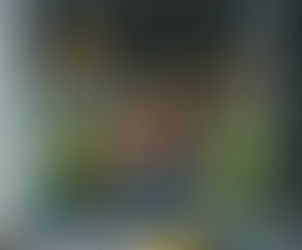Visual Art and AI: A New Era of Creativity
- Tretyak

- Mar 2, 2024
- 3 min read
Updated: Mar 9

The World of Art is undergoing a profound transformation, as Artificial Intelligence (AI) emerges as a powerful force, reshaping the creative landscape and challenging our very notion of what it means to be an artist. AI is not merely a tool; it's a collaborator, a muse, and even an independent creator, pushing the boundaries of artistic expression and opening up new realms of possibility.
AI as a Creative Tool: Expanding the Artist's Palette
Imagine an artist with an unlimited palette of colors, textures, and styles at their fingertips. AI is empowering artists with an arsenal of creative tools that can generate a breathtaking array of artistic effects.
Style Transfer: AI algorithms can analyze the stylistic elements of one image and apply them to another, creating unique hybrids that blend artistic styles in novel ways. Imagine merging the vibrant colors of Van Gogh with the geometric forms of Picasso, or infusing a photograph with the ethereal textures of a Monet painting.
Texture and Pattern Generation: AI can generate intricate textures and patterns that would be incredibly time-consuming or even impossible to create manually. Artists can use these textures to enhance their works, adding depth, complexity, and visual interest.
Image Manipulation and Transformation: AI can manipulate and transform images in ways that defy reality, creating surreal and dreamlike scenes. Imagine distorting perspectives, morphing objects, and blending elements from different images to create fantastical compositions.
Interactive Art Installations: AI can be used to create interactive art installations that respond to the viewer's presence and actions. Imagine an artwork that changes its form, color, or sound based on the viewer's movements or emotions, creating a dynamic and engaging experience.
AI as an Artistic Collaborator: A Dance Between Human and Machine
Beyond being a tool, AI is becoming a creative partner, collaborating with artists in a dynamic interplay of human imagination and machine intelligence.
Generating Creative Prompts: AI can analyze vast datasets of art and literature to generate creative prompts and ideas, sparking inspiration and pushing artists in new directions. Imagine an AI suggesting a theme, a color palette, or a composition based on its analysis of art history and current trends.
Co-creation: Artists can work with AI algorithms in a co-creative process, where the AI generates initial ideas or sketches, and the artist refines and develops them further. This collaborative approach can lead to unexpected and innovative outcomes, blurring the lines between human and machine creativity.
Interactive Artistic Performances: AI can be incorporated into live artistic performances, generating visuals, music, or even choreographing movements in real-time. Imagine a dancer interacting with an AI system that generates responsive visuals or music, creating a dynamic and improvisational performance.
AI as an Independent Artist: Challenging the Definition of Creativity
Perhaps the most controversial and thought-provoking aspect of AI in art is its ability to create art autonomously.
Generative Art: AI algorithms can generate original artworks, from abstract paintings to photorealistic portraits, without any human intervention. This raises questions about the nature of creativity and whether machines can truly be considered artists.
Exploring New Aesthetics: AI can explore new aesthetic territories, generating art that is unlike anything created by humans. This can lead to new forms of artistic expression and challenge our preconceived notions of what art can be.
The Question of Authorship: The emergence of AI-generated art raises complex questions about authorship and ownership. Who owns the copyright to an artwork created by an AI system? Is it the developer of the AI, the person who provided the training data, or the AI itself?
The Future of Art in the Age of AI: Navigating Uncharted Territory
The rise of AI in art presents both exciting opportunities and profound challenges.
The Evolving Role of the Artist: As AI tools become more sophisticated, the role of the human artist will likely evolve. Artists may become curators, collaborators, or even critics of AI-generated art, guiding the creative process and shaping the aesthetic landscape.
Redefining Art: The definition of art itself may need to be re-evaluated in the age of AI. What constitutes creativity when machines can generate art that is indistinguishable from human creations? How do we value and appreciate art that is not created by human hands?
Ethical Considerations: The use of AI in art raises ethical concerns about bias, authenticity, and the potential for misuse. How can we ensure that AI-generated art is not used to deceive or manipulate? How can we protect the rights and livelihoods of human artists in an AI-driven art world?
The journey into the future of art with AI is just beginning. As we navigate these uncharted waters, it's crucial to engage in open and thoughtful dialogue about the implications of this transformative technology. By embracing the creative potential of AI while addressing its ethical challenges, we can ensure that art continues to inspire, challenge, and enrich our lives in the age of intelligent machines.






































































































































This is a fascinating look at how AI is changing the world of art! I'm amazed by the creative potential of tools like DALL-E and Midjourney. The discussion about AI's role in art raises important questions – I'm curious to see where this intersection of technology and creativity will take us.